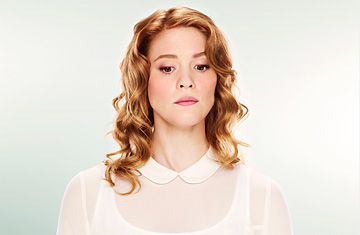
(5 of 6)
This time, the nondieters' nuclei accumbens stayed quiet, showing no interest in any more food, and their amygdalae lit up, flashing a "stay away" signal. The dieters, curiously, had the opposite reaction: even though they had consumed as much as the other group, their nuclei accumbens went into action--effectively saying "more"--and their amygdalae grew quieter. This didn't mean they were insatiable. Rather, as any recidivist dieter knows, it suggested that the very idea of food had become so fraught for them that drinking a milk shake triggered an anxiety response, which they then sought to medicate with other foods. "The what-the-hell effect has always been seen as a decisional thing," says Heatherton. "In fact, it's subtler than that."
One paradoxical way to contain cravings is what McGonigal calls mindfulness, which is a lot less squishy than it sounds. Studies of smokers in fMRI scanners have shown that trying to deal with an urge through brute resistance exacerbates the problem, with the lower brain effectively going from orange alert to red. People who instead acknowledge their feelings and nudge them back in line with deep breathing or other relaxation exercises can calm their brains faster. "Acceptance doesn't have to mean endorsing the feelings," McGonigal says.
Another willpower booby trap is known as the halo effect. You go to the gym and sweat for an hour, then you go out to lunch. You've been good, so why not get some fries with that sandwich? The flaw in your thinking is as basic as arithmetic: burning off 400 calories and gobbling 500 does not add up. But the halo effect doesn't care. The mere concept of behaving virtuously--even if you haven't actually done so--may be enough to give you the license to indulge.
Ayelet Fishbach, a professor of behavioral science at the University of Chicago, has run a study that takes this idea to its preposterous extreme. When she offers subjects a bowl of carrots and a bowl of chocolates side by side, they eat less chocolate and more carrots than they do when she mixes them in one bowl. That the two foods touch seems to cause some of the magical goodness of the carrots to rub off on the chocolate.
Another perceptual sleight of hand involves what psychologists call future-self continuity--and what Jerry Seinfeld once described as Tonight Guy vs. Tomorrow Guy. Tonight Guy can go drinking as late as he wants, because getting up in the morning is Tomorrow Guy's problem. We play the Seinfeldian game not just in such small ways but also in more consequential ones, like saving too little for retirement. "We feel closer to the self of a year from now than to the one 10 years from now," says psychologist Hal Ersner-Hershfield of New York University's Stern School of Business. "A very distant future self may be like a stranger."
It's possible to bridge that gap, and Ersner-Hershfield has come up with an imaginative way, by taking pictures of subjects and running them through software that adds 30 years to their age. People who see the self of tomorrow and then participate in a simulated 401(k) exercise put away more money than those who haven't gotten a glimpse of the person who awaits them three decades hence. Ersner-Hershfield has even developed virtual-reality goggles that allow subjects to meet their future selves by walking up to them in a full-length mirror.
